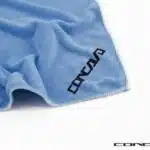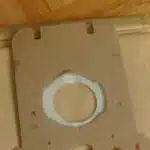Microfiber couches are popular for their comfort and durability, but they can easily become dirty and stained over time. As a professional cleaning specialist, it is important to understand the best methods for cleaning these types of couches to ensure that they remain in good condition for years to come. In this article, we will discuss the steps necessary to properly clean a microfiber couch, from identifying the type of stain to selecting the appropriate cleaning solution.
Before embarking on the cleaning process, it is essential to understand the construction of microfiber fabric. Microfiber is made up of tiny fibers that are much smaller than traditional fabrics. These fibers allow for greater absorption of liquids and dirt particles, making it an ideal material for furniture upholstery. However, because microfiber is so absorbent, it requires special care when cleaning to avoid damaging the fabric or leaving behind unsightly stains. By following these simple steps, you can effectively clean your microfiber couch and keep it looking its best for years to come.
Understanding The Composition Of Microfiber
Microfiber is like a chameleon of upholstery fabrics, with its ability to mimic the look and feel of various materials such as suede, leather, and velvet. It is composed of extremely fine synthetic fibers that are tightly woven together to create a soft and durable fabric. The durability of microfiber is one of the main reasons it has become popular in furniture manufacturing.
Proper maintenance techniques are essential for extending the lifespan of your microfiber couch. One of the most important things you can do is vacuum it regularly to remove any dirt or debris that may have accumulated on the surface. This not only keeps your couch looking clean but also prevents abrasive particles from damaging the fibers over time. In addition, spot cleaning spills and stains immediately after they occur can help prevent them from setting in permanently.
In order to best care for your microfiber couch, it’s important to understand its unique properties and how they impact different types of stains. Certain substances may require special treatment in order to avoid damaging the fabric or altering its appearance. By identifying different types of stains and their corresponding cleaning methods, you can ensure that your microfiber couch remains in top condition for years to come.
Identifying Different Types Of Stains
Understanding the Composition of Microfiber is essential before cleaning a microfiber couch. Identifying Different Types of Stains is also important in determining the appropriate cleaning method. Now that you have a basic knowledge of microfiber, it’s time to discuss how to remove stains from your couch.
Removing stains from your microfiber couch can be tricky, but not impossible. Prevention techniques should always be considered, such as using a protector spray or covering the couch when not in use. However, if there are already stains present, here are some ways to remove them:
- Use rubbing alcohol or dry cleaning solvent for ink stains.
- For food and drink spills, blot with a clean cloth and use water and mild detergent solution.
- For oil-based stains, sprinkle baking soda on the area and let it sit for 15-20 minutes before vacuuming it off.
It’s important to remember that different types of stains require different cleaning methods. Always test any cleaning solutions on an inconspicuous area first before applying it to the stain directly.
Next up is preparing for the cleaning process. Before jumping straight into cleaning the couch, there are a few things you need to do to ensure effective stain removal without damaging the fabric.
Preparing For The Cleaning Process
Gathering Supplies: Before beginning the cleaning process, it is important to assemble the necessary cleaning supplies, such as a vacuum cleaner, upholstery brush, microfiber-safe cleaning solution, cloths, and paper towels.
Vacuuming: Vacuuming is an essential first step in the cleaning process, as it removes dirt and debris that could otherwise become embedded in the microfiber fabric.
Spot Testing: Prior to applying any cleaning solution, it is important to conduct a spot test on a small, inconspicuous area of the couch to ensure that the cleaning solution does not cause any discoloration.
Gathering Supplies
Before starting the cleaning process, it is important to gather all the necessary supplies. This will help to make the cleaning process more efficient and effective. Choosing cleaning products that are safe for your microfiber couch is crucial in order to avoid damaging or discoloring the fabric.
When choosing cleaning products, it is important to read the labels carefully and follow the instructions provided. Avoid using any harsh chemicals or abrasive materials that can damage the surface of your microfiber couch. Some eco-friendly cleaning products like vinegar, baking soda, and lemon juice can also be effective in removing stains and odors from your couch.
Tips for eco-friendly cleaning include using a microfiber cloth instead of paper towels as they are more durable and can be washed and reused multiple times. Another alternative is to use steam cleaners as they use less water and do not require any chemicals. Gathering all these supplies beforehand will ensure that you have everything you need for a successful cleaning session without causing any harm to your couch.
Vacuuming
Preparing for the cleaning process involves various steps to ensure that your microfiber couch is cleaned effectively and efficiently. One of the essential steps in preparing for the cleaning process is vacuuming. As a professional cleaning specialist, I highly recommend investing in the best vacuums available on the market. High-quality vacuums can help remove dirt, dust, and debris from your couch’s surface without causing any damage.
When vacuuming your microfiber couch, it is important to use proper techniques to avoid damaging the fabric. Start by removing all pillows and cushions from the couch before vacuuming. Use a brush attachment or upholstery tool to gently remove any loose dirt or debris from the surface of your microfiber couch. Be sure to vacuum every nook and cranny of your couch.
Vacuuming is an important step in preparing for the cleaning process as it helps eliminate surface-level dirt and debris that may make it harder to clean stains later on. By investing in high-quality vacuums and using proper vacuuming techniques, you can ensure that your microfiber couch remains clean and well-maintained for years to come.
Spot Testing
Before beginning the cleaning process on your microfiber couch, it is crucial to spot test the cleaning solution you plan to use. Spot testing is an essential step in preparing for the cleaning process as it helps determine if the cleaning solution will cause any damage or discoloration to your couch’s fabric. As a professional cleaning specialist, I highly recommend conducting a spot test on an inconspicuous area of your couch before applying any cleaning solution.
To conduct a spot test, apply a small amount of the cleaning solution onto a hidden area of your microfiber couch and wait for it to dry. Check for any discoloration or damage before proceeding with the cleaning process. Common mistakes to avoid during spot testing include using too much cleaning solution, not waiting long enough for the spot test area to dry, and neglecting to check for any damage or discoloration.
In conclusion, spot testing is an important step in preparing for the cleaning process as it helps prevent any potential damage or discoloration to your microfiber couch. By following proper techniques and avoiding common mistakes during spot testing, you can ensure that your microfiber couch remains clean and well-maintained without causing any harm to its fabric.
Vacuuming The Couch
As a professional cleaning specialist, I understand the importance of maintaining the cleanliness of your microfiber couch. One effective way to do this is through regular vacuuming. Vacuuming techniques differ depending on the type of tool used, but the general rule of thumb is to work from top to bottom and left to right, ensuring that every nook and cranny is thoroughly cleaned.
When vacuuming your microfiber couch, it’s important to use a soft-bristled brush attachment to avoid damaging the fabric. Begin by removing any loose debris or crumbs with a handheld vacuum or brush. Then, using the brush attachment, work in sections starting from the top of the couch and moving downwards. Pay close attention to areas where dirt and grime tend to accumulate such as armrests and seat cushions.
Preventative measures can also be taken when vacuuming your microfiber couch. Regularly rotating cushions and flipping them over can help prevent uneven wear and tear. Additionally, covering your couch with a throw blanket or slipcover can protect it from spills and stains. By following these simple steps, you can ensure that your microfiber couch stays clean and looking its best for years to come.
With proper vacuuming techniques in place, it’s time to move onto testing for colorfastness before attempting any deeper cleaning methods. This will ensure that your microfiber couch does not experience any color bleeding or fading during the cleaning process.
Testing For Colorfastness
Before starting to clean your microfiber couch, it is essential to test for colorfastness. This crucial step ensures that the fabric’s dye will not bleed or fade during the cleaning process. Skipping this step may result in irreversible damage to your couch, which can be costly to repair or replace.
Colorfastness testing involves applying a small amount of water and/or cleaning solution on an inconspicuous area of your couch, such as the backside of a cushion or under the armrest. After applying, wait for a few minutes before blotting with a white cloth. If you notice any color transfer onto the cloth, stop immediately as this means that your couch is not colorfast and there are potential risks involved in proceeding with cleaning.
To prevent any damages from occurring during the cleaning process, here are some tips to keep in mind when conducting colorfastness testing:
- Always test on an inconspicuous area first
- Use a white cloth to avoid any dye transfer from colored fabrics
- Wait for at least 5-10 minutes after applying water or cleaning solution before blotting
- If you notice any color transfer onto the cloth, do not proceed with cleaning and seek professional help if needed.
With these tips in mind, you can now move on to the next step: using a dry cleaning solution.
Using A Dry Cleaning Solution
- When choosing a dry cleaning solution for a microfiber couch, it is important to consider the manufacturer’s instructions, the condition of the fabric, and the level of soiling.
- After selecting a suitable dry cleaning solution, it should be applied with a soft, clean cloth or brush, according to the manufacturer’s instructions.
- After the dry cleaning solution has been applied, it is important to test it in an inconspicuous area of the microfiber couch, such as the underside, to ensure it does not damage the fabric.
- If the dry cleaning solution is suitable, it should then be applied to the soiled area of the couch, using a light circular motion.
- After the dry cleaning solution has been applied, it is important to leave it to dry for the full amount of time suggested by the manufacturer.
- Finally, the dry cleaning solution should be brushed away using a soft, clean cloth to prevent any residue from remaining on the microfiber couch.
Choosing A Dry Cleaning Solution
As a professional cleaning specialist, one of the most common questions I receive is how to clean a microfiber couch. The truth is, there are various methods available, but choosing the right dry cleaning solution is crucial for getting the job done effectively. When it comes to choosing a dry cleaning solution, there are two main options: DIY or professional cleaning. While DIY solutions may seem more cost-effective and convenient, they can often do more harm than good. On the other hand, professional cleaning services have access to eco-friendly solutions that are safe for both your family and the environment.
When selecting a dry cleaning solution for your microfiber couch, it’s important to prioritize eco-friendliness. Chemical-based cleaners can be harsh on your furniture and pose potential health risks to you and your loved ones. Eco-friendly solutions such as vinegar or baking soda work wonders in removing stains and odors without causing any damage. Not only are these solutions natural and safe, but they’re also affordable and easy to find at home.
In conclusion, when it comes to choosing a dry cleaning solution for your microfiber couch, it’s important to consider eco-friendliness and weigh DIY versus professional options carefully. Opting for eco-friendly solutions like vinegar or baking soda ensures that you’re using safe products that won’t harm your furniture or health. Ultimately, prioritizing these factors will help you achieve optimal results in keeping your couch clean and fresh-looking for years to come!
Applying A Dry Cleaning Solution
Now that we’ve discussed the importance of choosing an eco-friendly dry cleaning solution for your microfiber couch, let’s dive into the process of applying it. Before applying any solution to your couch, it’s essential to check the manufacturer’s instructions for cleaning recommendations. Microfiber is known for its benefits, including durability and ease of maintenance, but using the wrong cleaning method can cause irreversible damage.
Once you’ve determined that your chosen dry cleaning solution is safe for your couch, it’s time to apply it. First, remove any loose debris or dirt with a soft-bristled brush or vacuum cleaner. Then, test a small inconspicuous area of the couch with the solution to ensure that it doesn’t cause discoloration or damage. If all looks good, proceed by spraying or dabbing a small amount of the solution onto a clean cloth and gently rubbing it onto the stain or affected area.
In some cases, alternative methods may be necessary for tough stains or odors. For example, using steam cleaners can break down greasy spots and kill bacteria without damaging the fabric. Alternatively, natural remedies such as lemon juice or club soda may work well on specific types of stains. The key is to be patient and persistent in finding the right method that works best for your microfiber couch while keeping eco-friendliness in mind.
Testing A Dry Cleaning Solution
Before applying any dry cleaning solution to your microfiber couch, it’s essential to test it first. This step is crucial in ensuring that the solution you’re using is safe and effective for your couch. Testing a small inconspicuous area of the couch will give you an idea of how the solution will react with the fabric and help you avoid any potential damage.
Testing a dry cleaning solution also allows for an effectiveness comparison between different solutions. Not all solutions are created equal, and some may work better than others on specific stains or fabrics. By testing multiple options, you can determine which solution works best for your microfiber couch without risking damage.
Safety concerns are also a significant factor when testing a dry cleaning solution. Some solutions may contain harsh chemicals that could cause discoloration or even harm to your health if not used correctly. By testing a small area first, you can ensure that the solution won’t cause any adverse reactions and use it safely on larger areas of your couch as needed. Remember, always follow manufacturer instructions and use caution when applying any cleaning solutions to your microfiber couch.
Applying The Cleaning Solution
Applying the Cleaning Solution:
Now that you have prepared the cleaning solution, it is time to apply it on the microfiber couch. A key tip is to always test the solution on a small, inconspicuous area of the couch first before applying it all over. This will help you determine if there are any adverse effects such as discoloration or damage to the material.
When applying the cleaning solution, make sure to use a clean and dry microfiber cloth. Dip the cloth into the solution and wring out any excess liquid. You don’t want to oversaturate the fabric as this can lead to watermarks and other issues. Instead, apply gentle pressure on the stained area with circular motions until it starts to lift off.
Cleaning Solutions Selection:
When selecting a cleaning solution for your microfiber couch, it is important to choose one that is specifically designed for this type of material. Avoid harsh chemicals such as bleach or ammonia which can damage or discolor microfiber. Instead, opt for a mild detergent or upholstery cleaner that is safe for use on delicate fabrics.
Look for products that contain natural ingredients such as enzymes or citrus extracts which are effective at breaking down dirt and grime without causing any harm to your couch. Additionally, consider purchasing a fabric protector spray which can help prevent future stains from setting in and prolonging the life of your microfiber sofa.
Scrubbing The Stain Gently
After applying the cleaning solution, it’s time to move on to the next step in cleaning your microfiber couch. Scrubbing the stain gently is important to avoid damaging the fabric. Harsh scrubbing can cause the fibers to fray, leaving your couch looking worn and old.
When scrubbing, use a soft-bristled brush or sponge. Avoid using anything abrasive that could damage the fibers of your couch. Work in circular motions, focusing on one section at a time until you have removed all visible stains. If you come across any stubborn stains that won’t budge, try applying a little more cleaning solution and allowing it to sit for a few minutes before scrubbing again.
Using appropriate cleaning products is key when cleaning your microfiber couch. Harsh chemicals can strip away the fabric’s protective coating, leaving it vulnerable to stains and further damage. Always read labels carefully before using any product on your couch and follow instructions closely to avoid any mishaps.
Now that you’ve finished scrubbing your couch clean, it’s time to rinse out the fabric thoroughly. Rinsing will help remove any residue left from the cleaning solution and prevent it from attracting dirt and grime in the future. Next up: rinsing the fabric!
Rinsing The Fabric
Before beginning the rinsing process, it is important to thoroughly vacuum the fabric of the microfiber couch to remove any dirt or debris.
The fabric should then be dampened with warm water and a mild detergent solution.
Gently scrub the fabric with a soft brush or cloth in order to remove any stubborn stains.
After scrubbing the fabric, rinse the detergent solution from the fabric using clean warm water.
To ensure that all detergent residue is removed, the fabric should be rinsed at least three times.
Finally, the fabric should be dried with a clean towel and allowed to air dry in a well-ventilated area.
Preparing The Fabric
As a professional cleaning specialist, preparing the fabric is an essential step that should not be overlooked when cleaning a microfiber couch. Choosing cleaning products that are gentle on the fabric is crucial to avoid damaging or discoloring it. Always read the manufacturer’s instructions before using any product to ensure that it is safe for use on your couch.
One common mistake people make when preparing the fabric is using too much water. Microfiber is highly absorbent, and excessive water can damage the fibers and cause shrinkage. To avoid this, use a damp cloth or sponge instead of saturating the entire couch with water. It’s also essential to test any cleaning product on a small, inconspicuous area of the couch first to ensure that it does not cause any damage.
Another critical aspect of preparing the fabric is removing any dust, dirt, or debris from the surface of the couch. Use a soft-bristled brush or vacuum cleaner attachment to gently sweep away any loose particles before applying any cleaning products. This will help prevent these particles from being ground into the fabric during cleaning and potentially causing more significant damage. By taking these precautions when preparing your microfiber couch for cleaning, you can ensure that it remains in excellent condition for years to come.
Rinsing The Fabric
After preparing the fabric of your microfiber couch, the next essential step is to rinse it thoroughly. Rinsing is crucial because it helps remove any remaining cleaning product residue and dirt from the fabric. Failure to rinse adequately can lead to a buildup of cleaning agents that can cause discoloration or damage to the fibers. Therefore, as a professional cleaning specialist, I cannot stress enough the importance of rinsing.
One common mistake people make during rinsing is using too much water. Over-saturating the fabric can cause shrinkage and damage to the fibers. To avoid this, use a damp cloth or sponge when rinsing instead of pouring water directly onto the couch. Also, ensure that you rinse all areas of the couch thoroughly, paying special attention to crevices and folds where dirt can accumulate.
Finally, after rinsing, do not leave any excess water on the fabric. Use a clean towel or cloth to blot away any moisture gently. Leaving water on the fabric for an extended period can cause mold growth and unpleasant odors. By following these guidelines during rinsing, you can help maintain your microfiber couch’s excellent condition for many years to come.
Drying The Fabric
After thoroughly rinsing your microfiber couch, the next step is to dry the fabric. One common mistake people make during this process is using heat to speed up the drying process. However, exposing the fabric to high heat can cause damage, including shrinkage and discoloration. Therefore, as a professional cleaning specialist, I recommend air-drying as the best method for drying microfiber couches.
To air-dry your microfiber couch, start by using a clean towel or cloth to blot away any excess water gently. Then, leave the couch in a well-ventilated area where it can dry naturally. Avoid placing it in direct sunlight or near sources of heat such as heaters or radiators. Additionally, make sure that you do not use a hair dryer or any other heating tool to dry the fabric.
Finally, after air-drying your microfiber couch, ensure that it is completely dry before using it again. Moisture left on the fabric for an extended period can cause mold growth and unpleasant odors. Therefore, as a professional cleaning specialist, I recommend checking the fabric’s moisture level before using it again. By following these guidelines during drying, you can help maintain your microfiber couch’s excellent condition for many years to come.
Blotting The Couch Dry
An interesting statistic to note is that an average American spends around 2.5 hours per day on their couch, making it one of the most frequently used furniture pieces in any household. This frequent usage results in the accumulation of dirt, stains, and spills on the couch’s surface, which can be challenging to clean without the right techniques.
After cleaning the stained or soiled areas with suitable cleaning agents, blotting techniques come into play to remove excess moisture from the fabric. Using a clean white cloth or paper towel, gently press down on the damp area and repeat until all excess moisture has been absorbed. Avoid rubbing or scrubbing as this can damage the fibers and leave visible marks on your microfiber couch.
Once you have completed blotting the couch dry, it is essential to let it air dry thoroughly before placing any pillows or cushions back onto it. You can use a fan or open windows to promote air circulation and speed up drying times. Avoid using heat sources like hairdryers as they can shrink and damage the fibers of your microfiber couch. With proper blotting and drying methods, you can maintain your microfiber couch’s appearance for years to come.
Moving forward from blotting techniques, brushing the fabric will help restore its plushness while removing any remaining dirt particles that may have settled deep within its fibers over time.
Brushing The Fabric
- Brushing the fabric of a microfiber couch is an important step in its maintenance.
- The direction of the brush should be in the same direction of the fabric.
- Vacuuming the couch with an upholstery attachment will help to remove dirt and debris.
- Spot cleaning should be done with a damp cloth and a mild detergent.
- Care must be taken to ensure that liquid does not penetrate the fabric and cause damage.
- Blotting the area with a dry cloth should be done after spot cleaning to remove any residual moisture.
Brush Direction
As a cleaning specialist, it is important to address the subtopic of proper brush direction when cleaning a microfiber couch. The way you brush the fabric can affect its overall appearance and longevity. It is essential to avoid fabric damage by using the correct brushing technique.
When brushing the fabric of a microfiber couch, it is important to use a soft-bristled brush and always follow the grain of the fabric. Brushing against the grain can cause permanent damage to the fibers and leave your couch looking worn out. To ensure that you are going in the right direction, run your hand over the surface of the fabric before beginning to brush.
To avoid any potential damage, it is recommended that you start brushing from one end of the couch and work your way towards the other end. Using long, sweeping strokes will help remove any dirt or debris without damaging the delicate fibers. By following these simple steps for proper brush direction, you can keep your microfiber couch looking like new for years to come!
Vacuum Cleaning
After discussing the importance of proper brush direction when cleaning a microfiber couch, it is now time to discuss another essential method in maintaining its cleanliness: vacuuming. Vacuuming has numerous benefits, such as removing dirt and dust that can accumulate on the surface of the couch over time. It also helps in preventing permanent damage to the fibers caused by abrasive particles which can cause wear and tear.
Choosing the right vacuum cleaner is crucial in ensuring that your microfiber couch remains in good condition. It is recommended to use a vacuum cleaner with a soft-bristled attachment or one specifically designed for delicate fabrics. Avoid using vacuums with rotating brushes as they may scratch or snag the fabric, causing irreversible damage.
When vacuuming, start at one end of the couch and work your way towards the other end using long, sweeping strokes. Make sure to cover all areas including crevices and corners where dirt may accumulate. By incorporating vacuuming into your cleaning routine along with proper brush direction, you can ensure that your microfiber couch stays clean and looking like new for years to come.
As a professional cleaning specialist, it is important to emphasize the significance of proper cleaning techniques when dealing with delicate fabrics like microfiber. Understanding how to choose the right vacuum cleaner and knowing how to properly use it will greatly benefit both you and your clients. Keep in mind that maintaining a clean environment not only provides aesthetic appeal but also promotes physical health which serves others in need.
Spot Cleaning
After discussing the importance of brush direction and vacuuming for maintaining the cleanliness of a microfiber couch, it is now time to delve into another essential method: spot cleaning. Accidents can happen, and spills or stains may occur despite our best efforts. Knowing how to properly spot clean a microfiber couch can help prevent permanent damage to the fabric.
To start, it is important to have the right products on hand. The best products for spot cleaning microfiber are usually water-based cleaners. Avoid using harsh chemicals or alcohol-based solutions as they can damage the fabric. DIY techniques such as using a mixture of water and mild dish soap or white vinegar can also be effective in removing stains.
When spot cleaning, it is crucial to test any cleaner on an inconspicuous area first before applying it to the stain. This will help ensure that the cleaner will not cause discoloration or further damage to the fabric. Use a clean cloth or sponge to gently blot the stain, working from the outside inwards. Avoid rubbing or scrubbing as this may cause pilling or matting of the fibers.
By incorporating proper spot cleaning techniques into your cleaning routine, you can help extend the life of your client’s microfiber couch while keeping it looking clean and fresh. As a professional cleaning specialist, it is important to stay informed about different methods and products available so that you can provide top-notch service that serves others’ needs effectively.
Using A Fabric Protector
After brushing the fabric of your microfiber couch, it’s important to apply a fabric protector to prevent future stains. Choosing the right fabric protector is essential for maintaining the quality and durability of your couch. Look for a protector that is specifically designed for microfiber fabrics and check to ensure that it doesn’t contain any harsh chemicals that could damage or discolor your furniture.
When applying fabric protector, it’s important to follow the instructions carefully. Start by testing a small, inconspicuous area of your couch to ensure that the product won’t cause any damage or discoloration. Once you’ve confirmed that it’s safe to use, apply the protector evenly over the entire surface of your couch using a clean cloth or sponge. Be sure not to oversaturate the fabric as this can lead to uneven drying and potentially cause water damage.
By taking these steps to apply a fabric protector, you’ll help keep your microfiber couch looking great for years to come. However, preventing future stains is also an important aspect of maintaining your furniture. In the next section, we’ll discuss some tips and tricks for reducing the risk of spills and marks on your couch.
Preventing Future Stains
How can you prevent future stains on your microfiber couch? The answer is simple: take preventive measures. By following these tips, you can keep your couch looking clean and new for a long time.
Firstly, avoid eating or drinking while sitting on the couch. Spills are inevitable, but if you must have food or drink nearby, use coasters and placemats to minimize the chances of stains. Secondly, consider using slipcovers or throws to protect your couch from pets or children who may accidentally leave stains. Lastly, regularly vacuum and brush the surface of your couch to remove any dirt, dust or hair that may accumulate.
Products like Scotchgard™ Fabric Protector can be applied to your microfiber couch to repel liquids and make cleaning easier in case of spills. However, before applying any product, be sure to check whether it is safe for use on microfiber fabric. Be cautious with household cleaners as well; some may contain chemicals that could damage the fabric of your couch.
Maintaining your microfiber couch is crucial for keeping it looking brand new. In the next section, we will discuss how to properly clean and maintain your microfiber couch to ensure its longevity.
Maintaining Your Microfiber Couch
Proper maintenance is essential to keep your microfiber couch in pristine condition. One of the most critical aspects of maintaining it is choosing appropriate cleaning products. Avoid using harsh chemicals or abrasive cleaners that can cause discoloration, fading, or damage to the fibers. Always check the manufacturer’s instructions on what products to use and what not to use.
Another common issue that people face while maintaining their microfiber couch is dealing with pet hair. Pet hair can be challenging to remove from any fabric, but microfiber seems to attract it more than others. To prevent this issue, vacuum your couch regularly with a brush attachment or use a lint roller for quick touch-ups between deep cleans. You can also try using a rubber glove or a damp cloth to collect pet hair efficiently.
By following these simple tips, you can ensure that your microfiber couch stays clean and looking new for longer. However, if you encounter any issues with cleaning it effectively, don’t worry! The next section will cover some troubleshooting common cleaning problems and offer practical solutions to help you get the best results possible.
Troubleshooting Common Cleaning Problems
Dealing with stubborn stains can be a frustrating experience for anyone cleaning their microfiber couch. Whether it’s pet urine, red wine or ink, removing the stain requires patience and the right tools. One of the best ways to remove stubborn stains is to blot them immediately after they occur with a clean cloth or paper towel. Avoid rubbing as this will only push the stain further into the fabric.
For oil-based stains like grease or butter, use a small amount of rubbing alcohol on a clean cloth to gently rub the affected area. For water-based stains like coffee or tea, mix equal parts vinegar and water in a spray bottle and apply onto the stain. Allow it to sit for 15 minutes before blotting with a clean cloth. Repeat if necessary until the stain disappears completely.
Preventing damage during cleaning is essential when taking care of your microfiber couch. Always read the manufacturer’s instructions before attempting any cleaning method. Avoid using harsh chemicals or cleaners that contain bleach as they may discolor or damage the fabric permanently. When vacuuming, use an upholstery attachment with soft bristles to avoid scratching the fabric. Additionally, avoid using too much water during cleaning as this may cause shrinkage or damage to the foam padding inside.
In summary, dealing with stubborn stains and preventing damage during cleaning are important factors in maintaining your microfiber couch’s appearance and longevity. By following these tips and being careful while cleaning, you can keep your couch looking new for years to come without causing any harm to its delicate fabric structure. Remember always to test any method on an inconspicuous area first before applying it to visible areas of your couch.
Conclusion
Microfiber couches are a popular choice for many households due to their durability and easy maintenance. However, it is important to understand the composition of microfiber and identify different types of stains before beginning the cleaning process. Preparing for the cleaning process includes vacuuming the couch and testing for colorfastness. Using a fabric protector can help prevent future stains, while maintaining your microfiber couch can extend its lifespan.
Despite these precautions, there may still be some common cleaning problems that arise during the process. Troubleshooting these issues can help ensure that your microfiber couch remains in excellent condition. By following these steps and maintaining proper care of your microfiber couch, you can enjoy its comfort and longevity for years to come.
In summary, keeping a microfiber couch clean requires attention to detail and proper maintenance techniques. Understanding the composition of microfiber, identifying different types of stains, preparing for the cleaning process, using a fabric protector, preventing future stains, maintaining your microfiber couch, and troubleshooting common cleaning problems are all key factors in ensuring the longevity of your furniture. With consistent care and attention to detail, you can keep your microfiber couch looking clean and comfortable for years to come.
Image Credits
- “SOLD: microfiber green couch” by TheLivingRoominKenmore (featured)





























